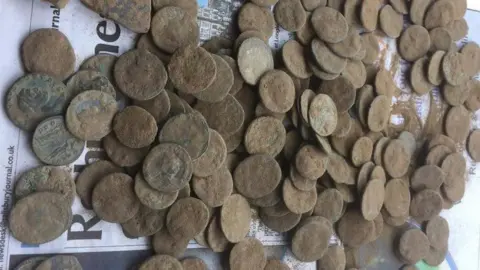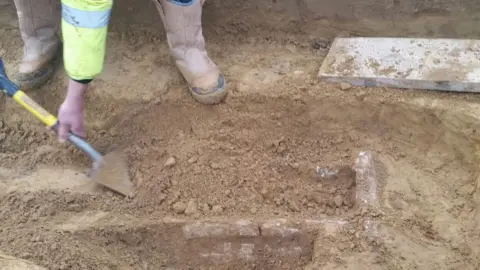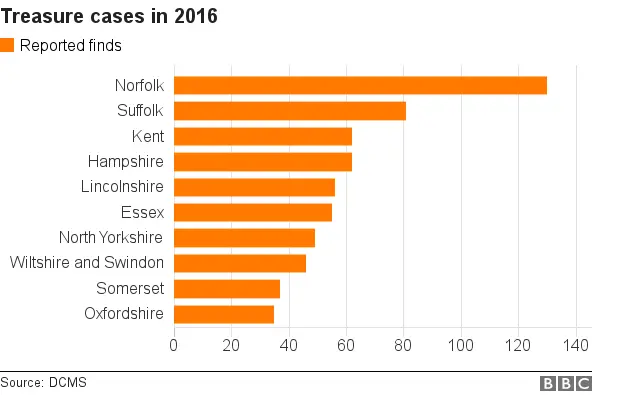Roman coins and lead grave found in Somerset field
 Jason Massey & Kevin Minto
Jason Massey & Kevin MintoA Roman grave containing a lead coffin and more than 250 coins has been discovered in a field.
The artefacts were found near Ilminster, Somerset, by a member of the Detecting for Veterans group and are believed to date from AD400.
There are about 200 similar lead coffins finds in the country but only six have been previously been discovered in Somerset.
The coins are with the British Museum for cleaning and valuation.
The site will be subject to further archaeological investigations in the new year.
Laura Burnett, the Somerset finds liaison officer, said lead was a "fancy and expensive" way of being buried in Roman times.
"They're probably using locally produced lead from the Mendips - so it might have been a bit cheaper here than in other parts of the county - but it's an expensive thing to be buried in."
'Chuffed to nuts'
Kevin Minto, from Detecting for Veterans - a group for ex-services personnel, discovered the coins and then found the grave when he returned to the site with the county archaeologist, Bob Croft.
Mr Minto said he originally found two coins and then a number of others close by.
"That was when I realised we had a hoard," he said.
"Obviously it's an important find, the archaeologists are chuffed to nuts and they'll do whatever they have to," he added.
 Jason Massey & Kevin Minto
Jason Massey & Kevin Minto"This is a very special site, a rare discovery of lead coffins," Mr Croft said.
"Lead ones that we know go from Shepton Mallet to Wiveliscombe, and this central part of Somerset - so this one is an unusual one."
There were 37 reported cases of treasure found in Somerset in 2016, the largest for five years.
The county is in the top 10 local authority areas for treasure according to official figures from the Department for Culture, Media and Sport.
Norfolk topped the list with 130 discoveries in 2016, a figure put down to how rural the area is.
Treasure is easier to find in areas with a lot of farming, as soil gets turned by ploughs and brings new finds to the surface.

